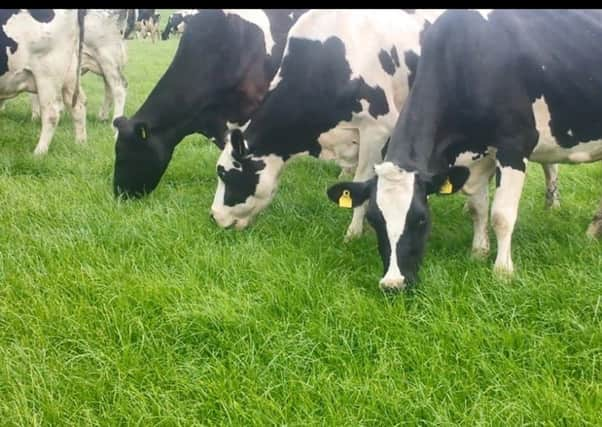Excess protein at grazing


This excess ammonia in the rumen is absorbed into the blood. As ammonia is toxic, the cow’s liver converts it to a less harmful form, urea. Good liver function is important for this conversion. Urea then rises in body fluids, including blood and milk (milk urea nitrogen), before being recycled via the saliva or excreted in urine and milk. The process of converting ammonia to urea in the liver requires energy. When grass protein is high, this can equate to an energy loss equivalent to one to three litres of milk loss/cow/day, and can exacerbate weight and body condition loss.
Although there is limited evidence for the link between excess protein and cow fertility at grass, the overarching trends are that excess protein (and elevated blood and milk urea nitrogen) is associated with decreased fertility. Some farmers avoid letting cows out to pasture until pregnancy is confirmed, otherwise they have to accept that fertility may ‘take a hit’ when cows go to full-time grazing.
Advertisement
Hide AdAdvertisement
Hide AdTrouw Nutrition grass analysis reports provide a value called ‘Nutriopt Fermentable Energy Protein Balance’ (NFEPB), which indicates the balance of energy to protein. A perfectly balanced diet will have a NFEPB of 0g/day. Where the diet is oversupplied with protein relative to energy (experienced most on fresh grass diets) the NFEPB positively exceeds 0g/day. The recommendation is to keep NFEPB between 0 and 200g/day for the complete diet however, Trouw Nutrition GrassWatch trials have demonstrated NFEPB to exceed 1000g/day in a typical grass based diet, indicating a considerable waste of protein.
‘Milk urea’ (MU) and ‘milk urea nitrogen’ (MUN) records can also provide an indication on how well the diet is balanced for rumen energy and protein. A rule of thumb is that MU is 19mg/dl (MUN is 8.9mg/dl) at 0g NFEPB/day (i.e. a perfectly balanced diet), with MU (or MUN) values above this indicating an oversupply of protein compared with energy. Average MU recorded by our GrassWatch trials in 2017 was 34mg/dl (MUN 16mg/dl) indicating a considerable waste of protein at grass.
Managing excess protein during grazing
l Offer cows a high energy, low protein concentrate when at grass
l Use high quality protein sources such as soybean or sopralin, as these will provide high levels of rumen bypass protein, which will be beneficial to production with less detrimental effects on fertility
Advertisement
Hide AdAdvertisement
Hide Adl Formulate concentrates using NFEPB values to insure a good energy protein balance
l Use milk urea records to identify major energy protein imbalances
l If possible, avoid the use of blanket nitrogen fertilizer spreading during the breeding period and during extended periods of dry weather.